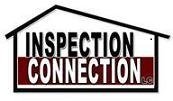The long run - March 2011
The Long Run
Nearly thirty years ago I began making a routine trek back and forth from the family ranch near Capitan to become highly educated here in Aggie Land. My college “vacations” typically involved lots of fresh air inhaled at a pant while branding calves, stuffing wool sacks, pounding posts or stretching wire. After these “breaks”, with the Ranchero packed full of clean underwear and ranch beef, I would ecstatically head back to State. The trip always started with the Eagles queued up in the cassette player. As I would hit cruising altitude south of Carrizozo -Henley, Frey & Dyson would be hittin’ the big notes: “You can go the distance - we’ll find out in the Long Run…!”
Don & Glenn knew that the “long run” was important. The Long Run is important when we are building and buying homes too.
When we shop for a new (or used) car we have become really good at evaluating purchase price and weighing that cost against how long we think the car will last, what it will cost to maintain (including fuel efficiency) and whether the car will still have value when it is resold. When buying a car we know that the “Long Run” is important and that the increased cost to purchase a Honda or Toyota over a similar model Dodge or Chevy may be repaid in better reliability, lower fuel costs, better safety and higher resale value.
It is hard to understand why a much more expensive purchase, like a home, does not receive the same scrutiny on value over the “Long Run” as a car. The stakes are much higher. Home maintenance and utility costs are a large percentage of our family budgets. The health and comfort of our loved ones is critical. We depend on our houses to be not only safe shelter but an investment that can increase in value over time.
I think information is the key to this decision making disparity. The internet has flattened the playing field for car purchase information. It is easy to know what you are getting for your money. Homes are a little tricky, even when mass produced we don’t know exactly what is under the hood. And custom homes, forget about it! A new custom home is an amazingly complex system for anyone to understand and accurately evaluate. Fortunately for home buyers, many builders are beginning to demonstrate how their homes are the Honda’s and Toyota’s of the residential world.
Systematically documenting the features and performance of a home during the construction process allows home shoppers and buyers to know what is “under the hood”. National and local builders are using green home certification systems like Build America, Build Green New Mexico, NAHB Green, LEED for Homes and Energy Star to demonstrate key metrics that set their homes apart. In addition to describing key features and providing engineering estimates on utility use, each of these certification programs requires adherence to best practices over a range of building science disciplines including energy and water efficiency, indoor air quality and durability through moisture management at the building shell and at the interior. After a green certified home is completed, the features and performance testing are summarized to provide an overall grade or level of best practices implemented. Every green certified home is an “above code home” with features and performance beyond those required by municipal building regulations. Color levels such as silver, gold and platinum indicate just how far beyond basic code requirements each project has reached. A home energy rating or HER index is also calculated for each green certified home. This is equivalent to a “MPG Rating” for a home and shows just what you can expect your utilities bills to be every year.
Realtors continue to have increased access to certified green home information. Although not quite as easy as Car Fax or Kelley Blue book to access, the information on these homes is out there for your review. In fact, a handful of national production home builders including KB Homes, Centex Homes, Del Webb Communities and Pulte Homes have committed to certifying every one of their homes and making the ratings available for marketing and comparative shopping. A constantly increasing number of our local custom and production builders have made similar green certification commitments.
Our residential building codes change constantly, the 2009 IEEC (energy code) for homes is being implemented in Las Cruces right now. “Above Code” green certified homes offer a hedge in to the future against home valuation decreases based on obsolescence of the design, performance and material used. A green certified home will hold its value better against future new home sales.
Don’t “hurry a lot” and don’t “worry a lot” - just ask if your next house is green certified and know that your next home “can go the distance - in the Long Run”.
Miles Dyson is the owner of Inspection Connection LC - Professional Home Energy Rating and Home Inspection Services. For more information visit: https://www.InspectionConnectionTexas.com.
